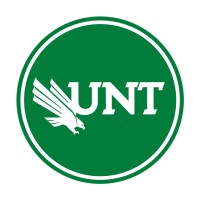Company Cyber Security Posture
NANA
NA Company Details
NA
NA
NA
NA
NA
NA
Scan still pending
NA
NA
Between 200 and 800
This score is AI-generated and less favored by cyber insurers, who prefer the TPRM score.
 NA Global Score
NA Global Score.png)

Company Scoring based on AI Models
| Model Name | Date | Description | Current Score Difference | Score |
|---|---|---|---|---|
| AVERAGE-Industry | 03-12-2025 | This score represents the average cybersecurity rating of companies already scanned within the same industry. It provides a benchmark to compare an individual company's security posture against its industry peers. | N/A | Between 200 and 800 |
Company Cyber Security News & History
| Entity | Type | Severity | Impact | Seen | Url ID | Details | View |
|---|
Company Subsidiaries

NA
Access Data Using Our API

Get company history
.png)
NA Cyber Security News
UGA joins NextGenAI consortium to accelerate AI innovation
Faculty at UGA began exploring the field of AI more than 40 years ago, and today, the university's Institute for Artificial Intelligence serves ...
AU named Georgia’s only National Center of Academic Excellence in Cyber Ops
Augusta University's School of Computer and Cyber Sciences (SCCS) has reached a significant milestone by earning its second designation from the ...
DOJ Brings Suit Against University Under Its Civil Cyber-Fraud Initiative
According to the complaint, the "big deal" is that the university made alleged false statements about its cybersecurity. The False Claims Act, ...
Georgia Tech Sued Over Cybersecurity Violations
The US government has filed a lawsuit against the Georgia Institute of Technology (Georgia Tech) and its affiliate Georgia Tech Research ...
U.S. Government Intervenes in Georgia Tech Cybersecurity False Claims Case
The Georgia Tech case serves as yet another reminder of the importance of contractor compliance with cybersecurity requirements in federal ...
CyberArch coordinator finds success in ‘team’ approach
Mark Lupo never envisioned a career that involved cybersecurity or working with college students. What he learned a long time ago, however, ...
Athens Cybersecurity Salaries: What Can You Expect to Earn?
Discover cybersecurity salaries in Athens, Georgia. Learn what you can expect to earn from entry-level to senior positions in Athens, GA.
DoJ’s Georgia Tech lawsuit a ‘warning’ to contractors on cyber compliance
In a landmark case for its “cyber civil fraud initiative,” DoJ last week filed suit against Georgia Tech, alleging that the university knowingly ...
US sues Georgia Tech over alleged cybersecurity failings as a Pentagon contractor
The US is suing one of its leading research universities over a litany of alleged failures to meet cybersecurity standards set by the ...

NA Similar Companies

Penn State University
There’s a reason Penn State consistently ranks among the top one percent of the world’s universities. Across 24 campuses, our nearly 88,000 students and 17,000 faculty and staff know the real measure of success goes beyond the classroom—it’s the positive impact made on communities across the world.

KAPLAN China
At Kaplan, we help people like you transform their lives through education. We serve students of all ages, from first-graders learning to read to professionals seeking postgraduate training. We are your partner in lifelong learning and are committed to helping you achieve your goals. We’re redefini

Washington University in St. Louis
Washington University in St. Louis, a medium-sized, independent university, is dedicated to challenging its faculty and students alike to seek new knowledge and greater understanding of an ever-changing, multicultural world. The university has played an integral role in the history and continuing gr

University of California
No other university does as much for so many as the University of California. For almost 150 years, the University of California has educated the brightest minds and helped California become a beacon of innovation. Our campuses routinely are ranked among the best in the world. But our reach extends

University of North Texas
Ranked a Tier One research institution by the Carnegie Classification, UNT is one of the nation’s largest public research universities with more than 46,000 students who push creative boundaries and graduate with credentials of value so they can become tomorrow’s leaders. UNT is recognized as a Mino

Monash University
Monash University is Australia’s largest and most international university. Its extensive educational offering, delivered via our 10 faculties, includes undergraduate, postgraduate and research courses. Monash is a research-intensive university, known for some significant and lasting discoveries tha

Frequently Asked Questions
Explore insights on cybersecurity incidents, risk posture, and Rankiteo's assessments.
NA CyberSecurity History Information
How many cyber incidents has NA faced?
Total Incidents: According to Rankiteo, NA has faced 0 incidents in the past.
What types of cybersecurity incidents have occurred at NA?
Incident Types: The types of cybersecurity incidents that have occurred include .
Additional Questions
What Do We Measure?
















Every week, Rankiteo analyzes billions of signals to give organizations a sharper, faster view of emerging risks. With deeper, more actionable intelligence at their fingertips, security teams can outpace threat actors, respond instantly to Zero-Day attacks, and dramatically shrink their risk exposure window.
These are some of the factors we use to calculate the overall score:
Identify exposed access points, detect misconfigured SSL certificates, and uncover vulnerabilities across the network infrastructure.
Gain visibility into the software components used within an organization to detect vulnerabilities, manage risk, and ensure supply chain security.
Monitor and manage all IT assets and their configurations to ensure accurate, real-time visibility across the company's technology environment.
Leverage real-time insights on active threats, malware campaigns, and emerging vulnerabilities to proactively defend against evolving cyberattacks.




